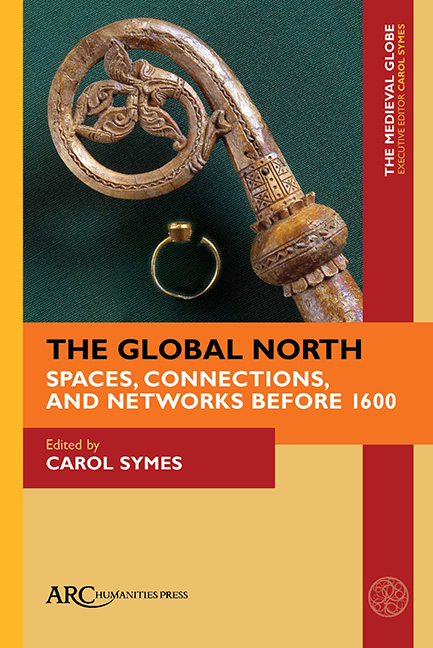Book contents
- Frontmatter
- Contents
- List Of Illustrations
- Introduction: Exploring the Global North, from the Iron Age to the Age of Sail
- Contesting Marginality: The Boreal Forest of Middle Scandinavia and the Worlds Outside
- Archaeological Evidence for Staraya Lagoda as an Early Scandinavian Emporium of the Global North
- Gunhild’s Cross and the North Atlantic Trade Sphere
- The Far North in the Eyes of Adam of Bremen and the Anonymous Author of the Historia Norwegie
- The Multi-Layered Spatiality of the Global North: Spatial References and Spatial Constructions in Medieval East Norse Literature
- Military Migration in the Baltic Sea Region, ca. 1400–1620
- Old and New Land in the North and West: The North Atlantic on the Medieval Globe around 1500
- Index
The Multi-Layered Spatiality of the Global North: Spatial References and Spatial Constructions in Medieval East Norse Literature
Published online by Cambridge University Press: 20 January 2022
- Frontmatter
- Contents
- List Of Illustrations
- Introduction: Exploring the Global North, from the Iron Age to the Age of Sail
- Contesting Marginality: The Boreal Forest of Middle Scandinavia and the Worlds Outside
- Archaeological Evidence for Staraya Lagoda as an Early Scandinavian Emporium of the Global North
- Gunhild’s Cross and the North Atlantic Trade Sphere
- The Far North in the Eyes of Adam of Bremen and the Anonymous Author of the Historia Norwegie
- The Multi-Layered Spatiality of the Global North: Spatial References and Spatial Constructions in Medieval East Norse Literature
- Military Migration in the Baltic Sea Region, ca. 1400–1620
- Old and New Land in the North and West: The North Atlantic on the Medieval Globe around 1500
- Index
Summary
THE INTERDISCIPLINARY ENDEAVOUR of mapping literature has produced multiple anthologies, articles, and infrastructure resources addressing a variety of research questions on literary cartography and spatiality. A more specific inquiry into the geographies and spatiality of medieval narrative, especially romances, has likewise gained much scholarly attention. Interestingly, these two groups of scholars have arrived at almost identical conclusions: spatial descriptions within medieval romance and other literary genres are best described as geographically opaque and vague.Moreover, such descriptive maps, for the most part, represent strings of place-names arranged in a linear fashion and thus have much in common with the mapping tradition of contemporary itineraries.In this article, I argue that it is necessary to analyze all kinds of spatial references, not only place-names, in order to gain a proper understanding of spatiality across medieval literary corpora. Furthermore, any such analysis has to include spatial constructions: that is, descriptions of the relations between spatial references, however scarce these might be, because the relational aspects of geographical descriptions give unique insight into the texts’ coordinate systems and wider medieval perceptions of geography and the surrounding world. Thus, the present article complements the existing scholarship on literary spatiality which has been heavily focused on landscapes, topography, and/or named places (especially within the literary GIS tradition) and offers a more nuanced, theoretically and methodologically informed way of approaching spatiality in a text, with or without employment of GIS (Geographic Information Systems), through the investigation of multiple categories of spatial references and spatial constructions.
This article also aims to show how geographical space is linguistically rendered in medieval texts of different genres, and what this linguistic information can reveal about perceptions of geography and space in medieval narrative. To fulfil its purpose, it will answer two research questions. First, what language resources (spatial references and spatial constructions) are used to convey spatial information in two Old Swedish texts: an original vernacular composition, Erikskrönikan (The Chronicle of Duke Erik); and a translation, Själens tröst (Consolation of the Soul)? Second, in what ways do the spatial profiles of these texts differ, and why? Are these differences persistent in other texts belonging to the same genres in the East Norse literary corpus, rhymed chronicles and devotional works respectively?
- Type
- Chapter
- Information
- The Global NorthSpaces, Connections, and Networks before 1600, pp. 91 - 114Publisher: Amsterdam University PressPrint publication year: 2021

